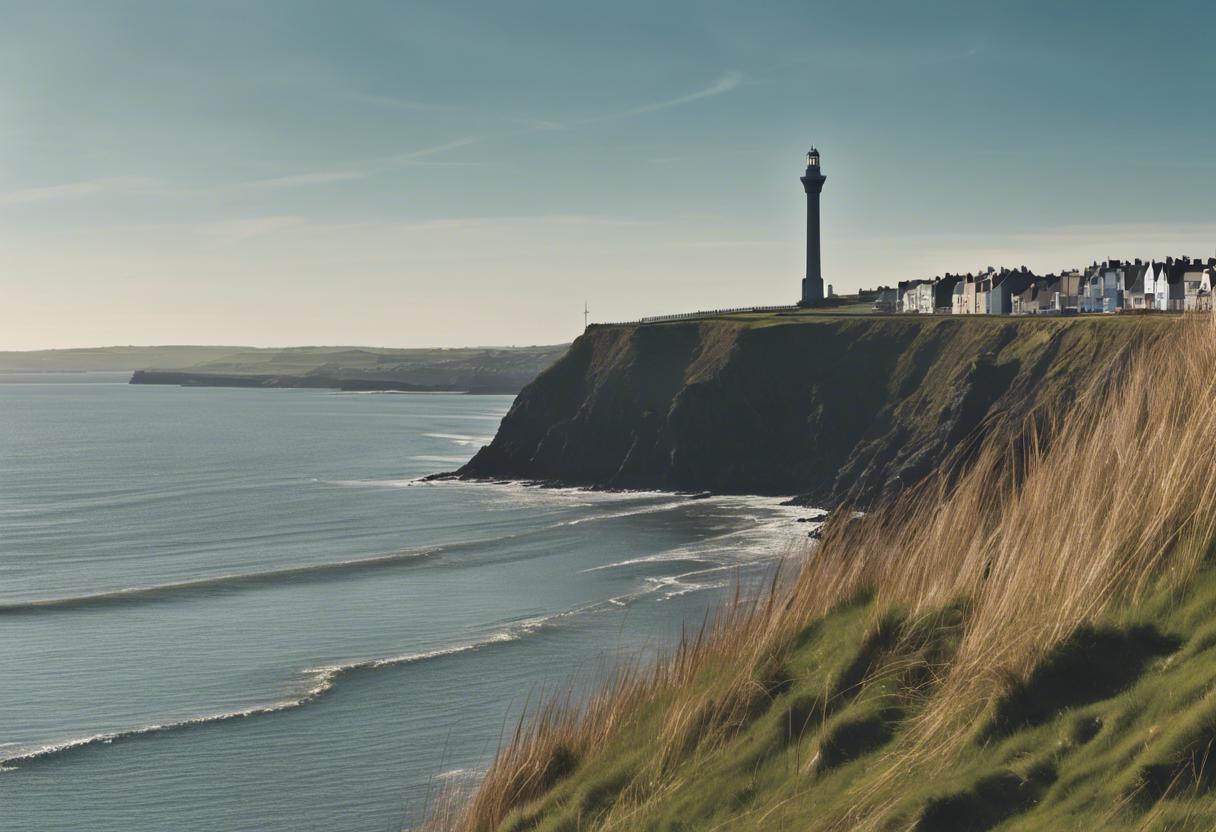Summer-time memories from childhood often take me back to Tramore, where we would try to jump around the ‘Metal Man’ statue atop Great Newtown Head, chanting, “Keep far, keep far, keep far from me for I am the rock of misery.” A local belief was that a young woman would receive a marriage proposal within a year, or unfortunately sprain her ankle, if she managed to hop thrice around the white pillar the figure stands on. Old Victorian postcards depict women perched on one leg, attesting to the tradition’s appeal. However, access to the place and the practice faded many years back.
Despite being alone on the seacoast of Waterford for two centuries, the Metal Man image exudes a jovial aura. Cloaked in the tricolour uniform typical of a Royal Navy petty officer, the figure keeps one hand casually in his pocket, while his other extend pointing towards the sea, somewhat resonating with the way John Travolta took to the dance floor in the movie ‘Pulp Fiction.’
For inhabitants braving a Tramore winter, it’s a known fact that the calm bay can quickly morph into a raging frenzy due to the power of storm-force winds blowing from the sea. The raw symphony of sweeping waves and white fury takes over, causing the sea to violently collide with the promenade and gush skyward against the cliffs.
I can distinctly recall a winter morning in January 1975, where the power of such a storm was clearly visible. The aftermath revealed a large coaster named Michael washed up on the beach after being carried ashore by the robust storm that caused windowpanes around the town to shake. Though there were no casualties thanks to the boat’s solid steel body, it was a stark reminder of the numerous wreck occurrences in the vicinity and the town’s most heart-wrenching tale of the Seashore ship’s sinking. On 30th January 1816, 363 people perished in the unfortunate event. The 350-ton vessel Seashore was customarily used to transport British military men and their families between military stations and warfronts.
The conclusion of the Napoleonic Wars witnessed the departure of the Sea Horse from Ramsgate to Cork. On board were crew members, approximately 300 men from the 59th Regiment’s 2nd Battalion, as well as 71 women and children. Unfortunately, the ship failed to reach Cork due to adverse weather conditions. It was near to the safer shores of Waterford Harbour but the vessel was unfortunately dragged into the stormy bay.
The Irish oak made ship began to disintegrate amidst the massive waves, eventually running aground on a sand shoal. Early in the afternoon, as the ship broke apart, children were stuffed into trunks, in an desperate attempt to allow them to make it to the land. Onlookers on the nearby beach watched the events unfold in terror, only managing to rescue 30 adult men from the water.
This tragic incident had a lasting effect on Tramore, as the town adopted the Sea Horse as their emblem. In 1858, the bay was one of the first locations in Ireland to establish a RNLI inshore lifeboat. In light of the potential confusion between Tramore Bay and the entrance to Waterford Harbour, Lloyd’s of London directed the placement of five at the bay heads: three at Great Newtown Head, and two at Brownstown Head.
These pillars pointed to the oldest intact and functioning lighthouse in the world, the Hook Head lighthouse, which has guided vessels into Waterford Harbour for over eight centuries. It’s said that statues were meant to be placed on the pillars, but in the end, only the Metal Man, crafted from cast iron, was mounted on Great Newtown Head. An identical twin was sent to Rosses Point in Sligo. The credit for the design of these statues goes to Cork-born sculptor Thomas Kirk, who was also responsible for Nelson’s Pillar in Dublin.
The Metal Man in Tramore was placed on its pedestal in 1824 to commemorate the eight-year anniversary of the Sea Horse shipwreck. The statue has weathered more than 200 winters there since.
Despite the attempts made by Waterford County Council, a persistent land disagreement continues to prevent tourists from safely accessing one of Waterford’s most noticeable sights of interest. Yet another summer season has come and gone, where countless tourists flocking to the coastal borough could only gaze at the structure from a significant remove, unintentionally echoing the phrase “Keep far, keep far, keep far from me.”

